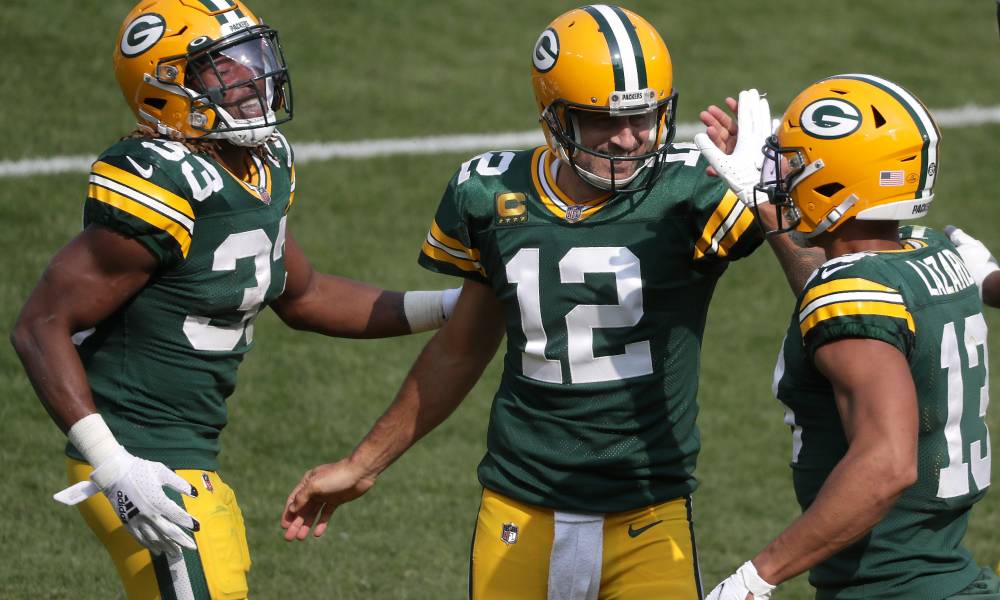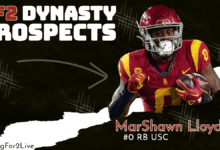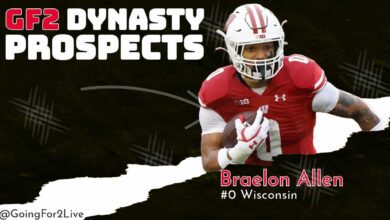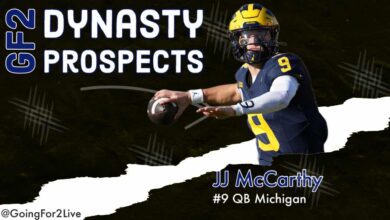
With covid and people being home this year, more have looked to play DFS for some fun and extra income. When you have that happening, it will bring in more beginners. There has been a solid amount of beginner questions on groups and forums. The questions about the differences between cash games and GPP tournaments?? Then we always have the how does my lineup look, and asking for tips on what they might change. To me and most, when you provide your full lineup, you’re really hurting yourself. If the lineup smashes and other people took your lineup and played it in those contests, you will never be able to win outright. Then to listen to people who you have no idea of their skill level is absurd to me. I’m not taking anything away from guys or girls giving their advice and opinions on the matter, but those are their opinions. How many times has your gut feeling said, play this player?? Then you switch him because someone you don’t know suggested it, and now all of a sudden, your original guy breaks the slate. When I started playing DFS, I did the same stuff, and most will say the same. If only I would have researched more information on the proper cash game strategy and the proper bankroll management. We’re all guilty when we first start to play and want to get that big GPP takedown, and don’t want the boring cash games for double the buy-in. Well, I’m here to help the beginners and might teach something to more skilled players also.

Terms to remember: Cash Games (head to heads, double-ups, triple-ups) Cash games are contests that payout more than 33 percent of the field. There is no tiered payout in these contests. Whether you win first or last, it’s still the same amount of money.
The first thing I want to touch on because it’s the most important. That would be bankroll management and contest selection. On any given slate, you should never be risking more than twenty percent of your bankroll. For a beginner, I would suggest no more than ten percent when just starting. You will hear people revert to the 80/20/10 rule and, that means 80 percent in cash games, 20 percent in GPP, and no more than 10 percent of your bankroll. Of the 80 percent in cash games, some will tell you to put 1/3 in Head to Head, 1/3 in double-ups, and 1/3 in other contests. As a beginner and even for an experienced player, you need to be playing more head to heads as well. In double-ups you can finish in the 45th percentile and still lose, but in Head to Head if you finish in the top 40-50 percent, you will get most of your money back.
Most anyone that knows me will tell you that I’m a math guy, and I like to try and stick as close to the rule as possible. There are some weeks where you might feel better and want to play some more money than usual, and that’s fine, but don’t put more in play than you’re comfortable with losing. When you risk more than what you normally do, it will add more stress to you, especially if the lineup is looking bad. That is when we all start to 2nd guess ourselves. It usually results in tilt entering the next available slate. If you play poker when you lose your stack on a bad beat, it results in you getting more chips. The same type of tilt applies here. So make sure you prepare for that scenario when it comes up.
Love our content? Check out the GoingFor2 Live Podcast Network!
When we first start, we all see the big GPP prizes we’re instantly attracted. The reality is those top-heavy buy-ins are the worse structured payouts in DFS. Those are just like hitting the lottery. So when choosing those contests, look for a flatter payout and one that isn’t as top-heavy. By learning contest selection and what you’re good at, your bank account will thank you, and if you have a wife, she will too. It takes some restrain when you see these contests like that, but with proper bankroll management and contest selection, you can build a solid balance. When you build a good bankroll, it allows you to play large GPP’s while still making a profit. Another note for cash games, when playing double-ups, play the single entry contests. The single entry contests line to cash is usually lower than the contests where the pros are entering 150 lineup trains of the same lineups.
As a personal breakdown to get a better idea of how I do things, and in no way am I saying this is the right and only way. On most main slate contest, I flirt with 20 percent of my bankroll, and sometimes I have been guilty of close to 30 percent. When I go more than 20 percent, it’s because I feel like I have a better handle of the slate than usual. On most main slates, I will play anywhere from $450-$500 in cash games and $80-$100 in GPP. The way I play GPP contests, I don’t look to minimum cash. I play those with full intentions of possibly losing the whole GPP buy-in. Now I won’t complain by any small profit or minimum cash in GPP, but that isn’t how I approach those. It’s boom or bust for me in GPP. This is why I make sure my cash game allocations are the proper percentage. When those are set right, I can lose all my GPP entries and still make for a solid profit, and I’m content with that. Hopefully, this bankroll breakdown will help out and save someone from getting all of the DraftKings deposit bonuses. Let’s get to the cash game strategy, and I will try and be brief since I’ve rambled on long enough already.
Cash Game Strategy
As I have discussed what a cash game entails for payout structure, I will give some more about the contests. In cash games, you want to maximize the floor of your players and lineup. With cash games not being a tiered payout, we don’t have to worry about finishing first or top ten. We need to aim to beat out 50 percent of the field, so we need to build a good and consistent lineup. A few years ago, you could score 125 and feel good about your chances of winning.
That has changed as the scores have got higher, but the strategy remains the same. One way to make a cash lineup is from your experience in those same contests. You should know what the score to cash is most weeks and use that as a target score. Let’s say the target score most weeks is 140. When building your lineup, use that 140 as the reference point. Here is how we figure it. The standard value multiplier used to be 2.5x the salary, but now it is more toward the 3x for skilled players. With your Quarterback, you really want 4-5x.
Let’s say Dalvin Cook has a salary of $6,000 (massive chalk at that price). Since we want 3x the salary, you would need Cook to get at least 18 fantasy points. We figure that by multiplying ($6,000 x 3=18). Now you do this for every player in your lineup, and when you add their totals up, it needs to equal at least 140. If the total you’re coming up with is less than 140, then you need to find out where you can make the corrections at.
In GPP, I do something similar, but I make the target score over 200. For that, I take the salary and divide it by the $50,000 we have to work with. The number it gives me is the percentage of salary. Then I take the target score and multiply it by that percentage, and the number it gives me is the number that he has to get to hit that 200 score. The example with Dalvin again ($6,000 / $50,000 = 12%) (200 x .12 =24). So, if I don’t think Dalvin can get to 24 fantasy points in the matchup, I will take him out of the lineup for that one. This is my system with cash games and GPP, and as I said it’s not always right, but it works for me.
Ownership
A common mistake in cash games, that I’ve heard quite a bit lately is they don’t care about ownership in cash. To me, that is the wrong way and the opposite of how to traditionally play cash games. You have to identify the good and the bad chalk (chalk is a player that will be highly owned). A recent case was Mike Davis at a $4,000 min price because he was priced as if Christian McCaffrey was going to play. In cash games, you just lock Davis in your lineups and take the outcome. Even if he doesn’t do anything his ownership will be so high that he can’t hurt you, but do you know what happens if he goes 5x plus, and you faded him because he was chalky??
It puts you so far behind the field if he goes for 20 plus at 80 percent ownership, and the more expensive guy you played bust or gets right at value. The name of the game is to beat 50 percent of the field, so if 80 percent has that cheap value play and they smash, and you don’t have him then you need to make sure all of your other spots exceed value because you have to separate yourself from that other 20 percent that didn’t play the chalk also. There are many weeks you might not like a guy, but in cash sometimes you have to eat the chalk because of the ownership and the possibility they smash.
The weeks that the chalk all hit, if you faded most of it then you might as well “chalk” that one up as a loss. In GPP by all means fade all the chalk you want, but in cash on certain value plays you have to eat the chalk and be with the field on it. In my case I tend to go with the field on a value play that I’m in the middle about because my luck is I take a stand and fade them, they break the slate and it makes my chances a lot harder to cash.
The cash game strategy is to maximize the floor, and ways we do that is by checking the Vegas game totals. You want to find the higher scoring games and the ones where the passing game for both teams will be in play. The offensive pace and how many plays per game they run is always something to research.
Another thing that has come up lately is who to play in the flex?? In cash, I think I can count on one hand how many times I’ve played someone other than a running back in my flex. The rule or strategy I go by is using three running backs and between the three I want at least 70 touches or targets combined. Here recently the idea of a Wide Receiver in the flex has been discussed more, and I am slowly getting on board with it. The way I have been looking at it is, say David Johnson is $5400 and going to get decent ownership in cash games, and you’re looking at him as your third running back. Now as you’re looking you see a receiver like Diontae Johnson at the same price as David. Even though David is going to get the carries and most of the run game work, he doesn’t have as safe as a floor of Diontae because of the consistent targets he gets. In this case, the receiver has the same type of floor if not a higher one, and he has more upside. So, when in situations like this, even though it pains me to say so, running four receivers is cash viable that week.
Quarterback
They touch the ball more than anyone in the game and have more opportunities for points than anyone else. The trend isn’t to pay up at Quarterback most of the time but to find a good QB in a good matchup, and one that uses his legs in the run game. With a running QB we get a safer floor with the upside of more. Some weeks I build around the QB and others it’s at RB, it just depends on the value at the positions. When you have a slate with some of the top rushing QB’s not on it, that is when you can be more likely to pay down for a cheaper QB in a good matchup.
Running Back
In an RB you want one that is independent of game flow. The last thing you need is a blowout and your guy isn’t involved in the passing game, so he is standing on the side. For your RB1, you want him to be a three-down back, and one that will get at least twenty touches or targets combined. In the RB2 this is usually where I look for value. Whether it be a guy stepping up because of an injury, or someone that was just mispriced. The cheap value back I want him to get at least 16 combined touches/targets. I try to live by the 70 touches/targets idea, but in the NFL now you’re going to find it hard week in, and week out to find the RB’s getting that much work, so I try and get as many combined as possible.
Wide Receiver
This is the position with the most variance and one that puts them at the mercy of a few things outside of their control. If they have a backup QB playing then it could hurt their target share and the offense as a whole. The weather can take some receivers out of the game as well, if you can’t throw then it’s going to be hard to have a good day as a receiver. When I’m looking at WR’s, I want consistent targets in an offense that runs a lot of plays, and a lot of pass plays. The one thing that isn’t always accurate is the WR/CB matchup, but it gives us a decent representation of what to expect. I use the WR/CB matchup, consistent targets in a good offense, and a game with a high total to choose my receivers.
Tight End
It’s always touted as the ugliest position in football, and it usually is. The options are usually to pay all the way up, or go to value town and pay all the way down. The TE position is so volatile each week. In cash games, I rarely pay up for TE, and I look for a good cheap value in a good passing offense. Sometimes you would almost be better just blindly submitting a TE and just see what happens. If you can find the good value savings and they’re able to get in the end zone or have multiple catches, it could help push you over the top as long as your savings were spent in the right places.
Defense
With the defense I do the same as TE and usually pay down. I look for a defense in a low scoring game that gets pressure on the QB, and can create some turnovers. If you have a cheap defense that is going up against a backup QB or a team with a lot of injuries, then plug them in. Use the savings wisely though!!!
If you took the time to read all of this, I hope it helps some, and I appreciate you!!! I didn’t want to break it up into two articles about bankroll management and cash game strategy, so it’s a little longer than anticipated. If you’re a beginner, I hope this helps you in any way, and to anyone that took the time to read it, I hope there was some information you picked up on as well.
May variance be on your side, and the DFS gods with you!!!
ATTN Dynasty Commissioners: Do you want to do something cool for your league? How about a 1-hour live show dedicated to YOUR league? Team-by-team breakdowns, rankings, and more. For details and to book a show, visit: GoingFor2.com/plp.






